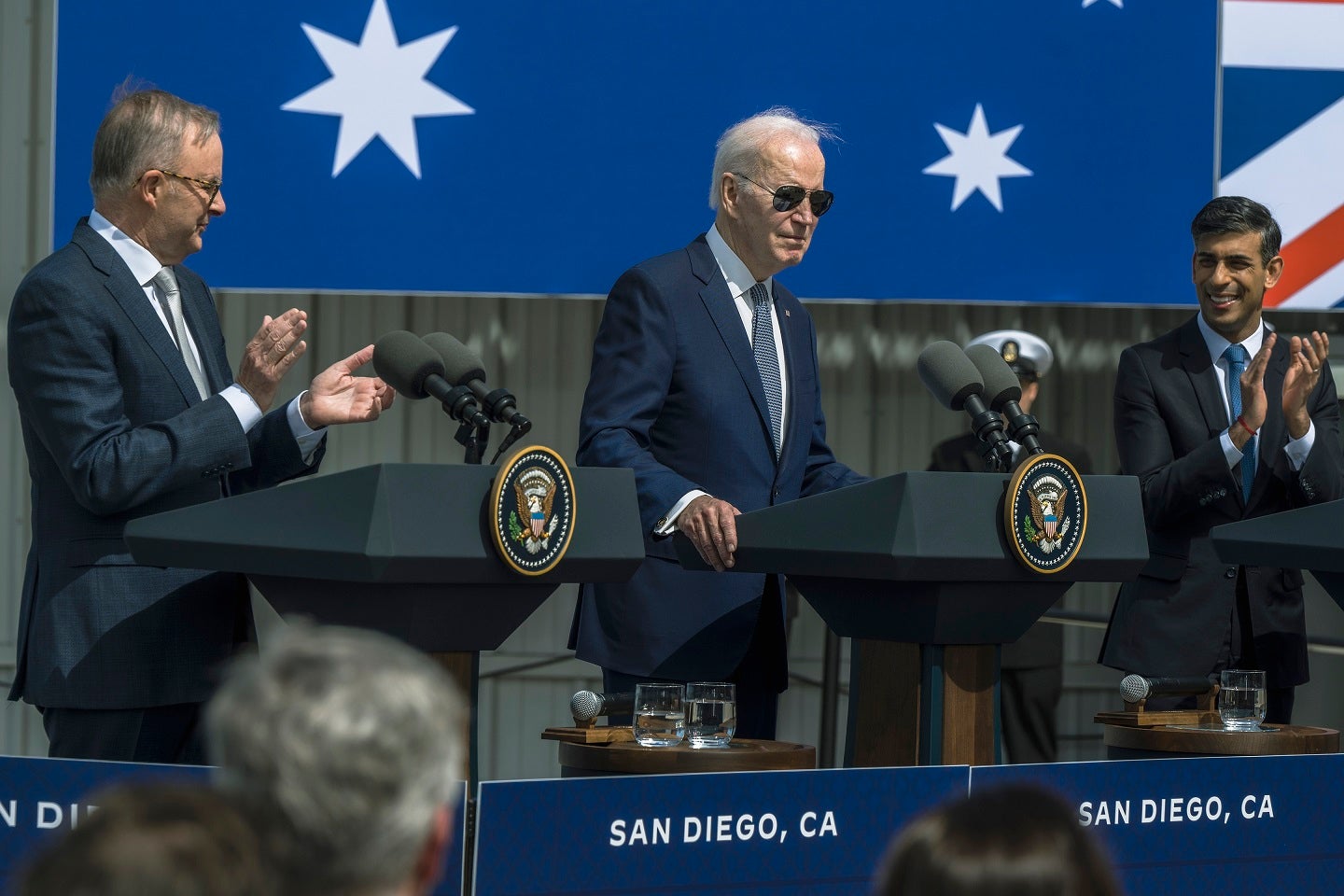
The AUKUS alliance, comprising the United States, United Kingdom, and Australia, has unveiled advancements in defence cooperation marked by agreements and capabilities.
Defense Ministers of the three nations convened at the Defense Innovation Unit Headquarters in California, setting the stage for security initiatives and bolstering joint capabilities in the Indo-Pacific region and beyond.
The alliance’s first stride involves a possible foreign military sale to Australia, approved by the US State Department, totalling up to $2bn (A$3bn). This sale focuses on AUKUS-related training and training devices, supporting the trilateral AUKUS pillar I programme.
The proposed equipment and services aim to elevate Australia’s maritime capabilities, reinforcing its strategic mission with a focus on submarine navigation, communications, and ship control. HII, General Dynamics Electric Boat, and Systems Planning Analysis are the principal contractors, revealing the collaboration’s broad industry participation.
British and US submarine specialists Babcock and HII have formed the AUKUS Workforce Alliance (AWA) with Australian academia to address workforce needs for Australia’s defence sector.
The AWA, a trilateral initiative under the AUKUS programme, aims to prepare a skilled workforce to support Australia’s pathway to sovereign nuclear-powered submarines. This partnership involves collaboration with Australian universities, including Adelaide, Curtin, and New South Wales.
In parallel, the AUKUS alliance has entered a new phase, as highlighted by Defence Ministers during a meeting in California. The meeting outlined key stages for military maritime programmes, particularly emphasising increasing training for sailors on nuclear-powered submarines.
Australia’s acquisition of nuclear-powered attack submarines (SSNs) is central to the agreement. The SSN-AUKUS design involves collaboration between the UK, US, and Australia, with construction set to occur in both the UK and Australia’s Osborne yard.
The alliance’s commitment to strengthening security in the Indo-Pacific region was underlined, emphasising threat detection, quantum technology, and autonomous systems. This collaboration reveals a strategic advantage for the UK, Australia, and the US as they jointly progress in critical areas of peace and security.
Furthermore, a joint statement from the AUKUS Defense Ministers meeting emphasised the generational opportunity presented by AUKUS to modernise and enhance longstanding partnerships.
This year, the UK Ministry of Defence allocated £4bn for the detailed design and long leads phase of the AUKUS programme, focusing on the future nuclear-powered attack submarine. Under contracts with defence primes Babcock, BAE Systems, and Rolls-Royce, the MoD aims to deliver the first British AUKUS SSNs by the late 2030s.
The collaboration spans two pillars: conventionally armed, nuclear-powered submarines (Pillar I) and advanced capabilities (Pillar II). The progress on Pillar I includes the development of SSN-AUKUS, involving increased training for Australian sailors and industry personnel, preparation for Submarine Rotational Force-West, and a commitment to upholding non-proliferation standards.
Pillar II, focusing on advanced capabilities, encompasses a range of initiatives, from maritime autonomy experimentation to deep space radar capability. The AUKUS partners are accelerating the development of quantum technologies, resilient and autonomous AI technologies, and cyber capabilities.
Establishing the AUKUS Defense Investors Network and Advanced Capabilities Industry Forum reflects the alliance’s commitment to private sector engagement and defence trade collaboration.
As the three nations align on strategic goals, the alliance attempts to ensure a resilient, prepared, and co-operative response to emerging challenges.




